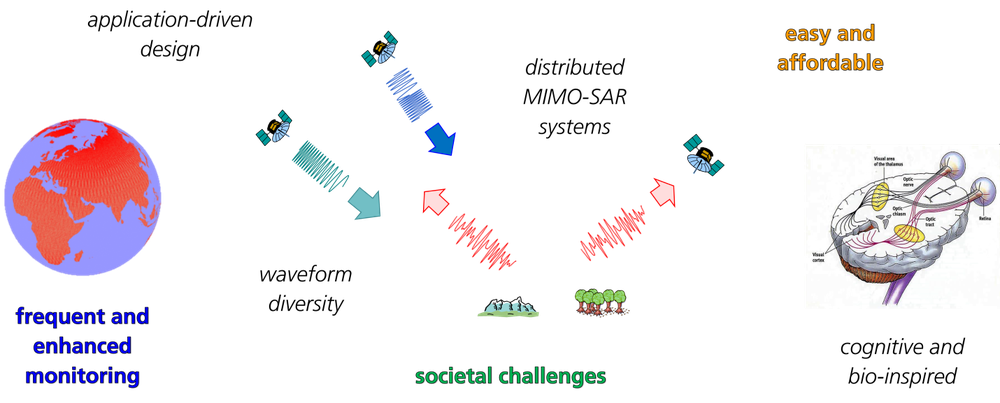NewSpace SAR
Synthetic aperture radar (SAR) is a key remote sensing technique for Earth observation. The DLR has established a leading position in this field thanks to the TanDEM-X mission and the Tandem-L proposal, whose instrument will deliver weekly high-resolution images of our planet, thereby allowing quantification of several essential climate variables.
While this is a huge step forward, some applications require much more frequent temporal sampling. An example is soil moisture retrieval for water cycle research, which could help make weather predictions more accurate.
SAR missions with frequent revisit and affordable costs, however, call for radically new concepts and an application-driven system design. They can be accomplished by satellites in higher orbits or myriads of small satellites, exploiting disruptive technologies and techniques, such as mass-produced platforms, inflatable antennas, joint radar-communication systems, distributed and fractionated SAR, as well as waveform diversity.
Still further in the future cognitive SAR systems will allow detecting salient features in a scene in real time and reconfiguring further radar satellites accordingly. In this way it will be possible to maximize the information content of the acquired signals subject to the constraint of limited system resources, e.g., downlink data rate.

The NewSpace SAR group aims at establishing the foundation for a new SAR system design approach based on groundbreaking ideas through the elaboration of theoretical models and the development of signal processing algorithms, spreading the on-going NewSpace revolution to SAR remote sensing, and posing the basis for future Earth observation missions with frequent revisit that will yield remarkable societal benefits.
